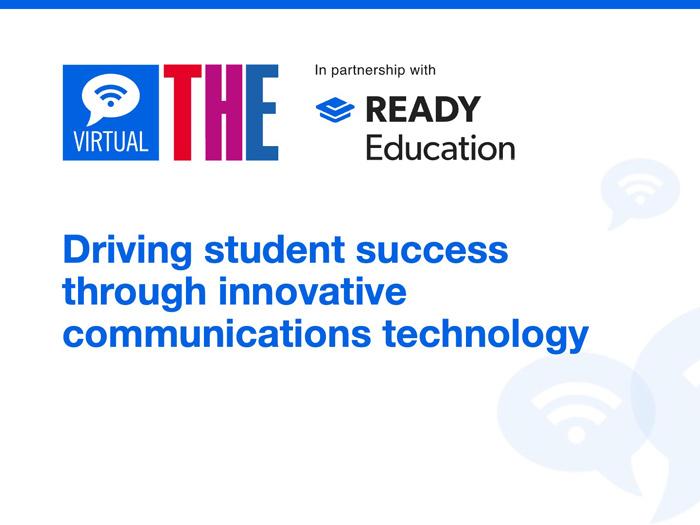The 21st-century university can drive engagement and student success by using apps and other digital tools to enhance the on-campus experience. At a webinar hosted by Times Higher Education in partnership with Ready Education, industry experts discussed how higher education’s digital transformation has augmented the campus.
Apps such as Ready Education’s myday are offering students digital entry points that aid navigation across the university estates and handle everyday queries efficiently. Such functions streamline the induction process and create a sense of belonging for students, offering support for their health and well-being, and providing an always-on resource for pastoral care.
Such apps can be customised to meet an individual university’s needs. Way-finding tools such as MapsIndoors and MazeMap can be integrated with the app and offer an invaluable resource for students – particularly those whose education is provided by a number of campuses.
“MapsIndoors is a really handy thing,” said Hayley Billington, student communications officer at the University of Gloucestershire, where students have four campuses to negotiate. “All of the room numbers and locations of sessions and lectures are all listed on an indoor interactive map, just like Google Maps but of a building, and that is a really good tool.”
Billington said Gloucestershire’s student communications extended to digital signage that echoed the information contained on the app. Blending the physical and digital was a strategy also used by Nottingham Trent University.
“We have a lot of QR codes across our campuses, so if they are outside a room and they need some information about how to use some technology in the room, there will be a QR code to send them to the right page,” said Dhara Padhiar, web and digital content officer at Nottingham Trent University.
Anthony Phillips, country manager (UK) at Ready Education, said knowing where and when to be on campus was fundamentally important for students, and that integrating timetable and location information in an intuitive app or web portal was an effective way to ensure students were not overwhelmed from day one. “What I am hearing from universities is that, actually, that has an impact on their well-being, their performance, and ultimately their success at university,” he said.
Marlene Tobias, principal administrative officer at the University of Wales Trinity Saint David, said students can be incentivised to use universities’ apps by using them to distribute vital information such as the timetable. Furthermore, apps can be used to help prospective students make a more informed decision about where to study. “We use the app as a marketing tool, so we have got all our programmes listed,” Tobias said. “If students want to book in for an open day or come and visit, they can book via the app.”
Apps present a vast array of options. Phillips advised institutions to start with the essentials and embed more information and functionality over time. “That’s the best way to do it,” he said. “Think about the core functions of the university first and then build on it.”
The panel:
- Hayley Billington, student communications officer, University of Gloucestershire
- Alistair Lawrence, head of branded content, Times Higher Education (chair)
- Dhara Padhiar, web and digital content officer, Nottingham Trent University
- Anthony Phillips, country manager (UK), Ready Education
- Marlene Tobias, principal administrative officer, University of Wales Trinity Saint David
Watch the webinar on demand above or on the THE Connect YouTube channel.
Find out more about Ready Education.


comment